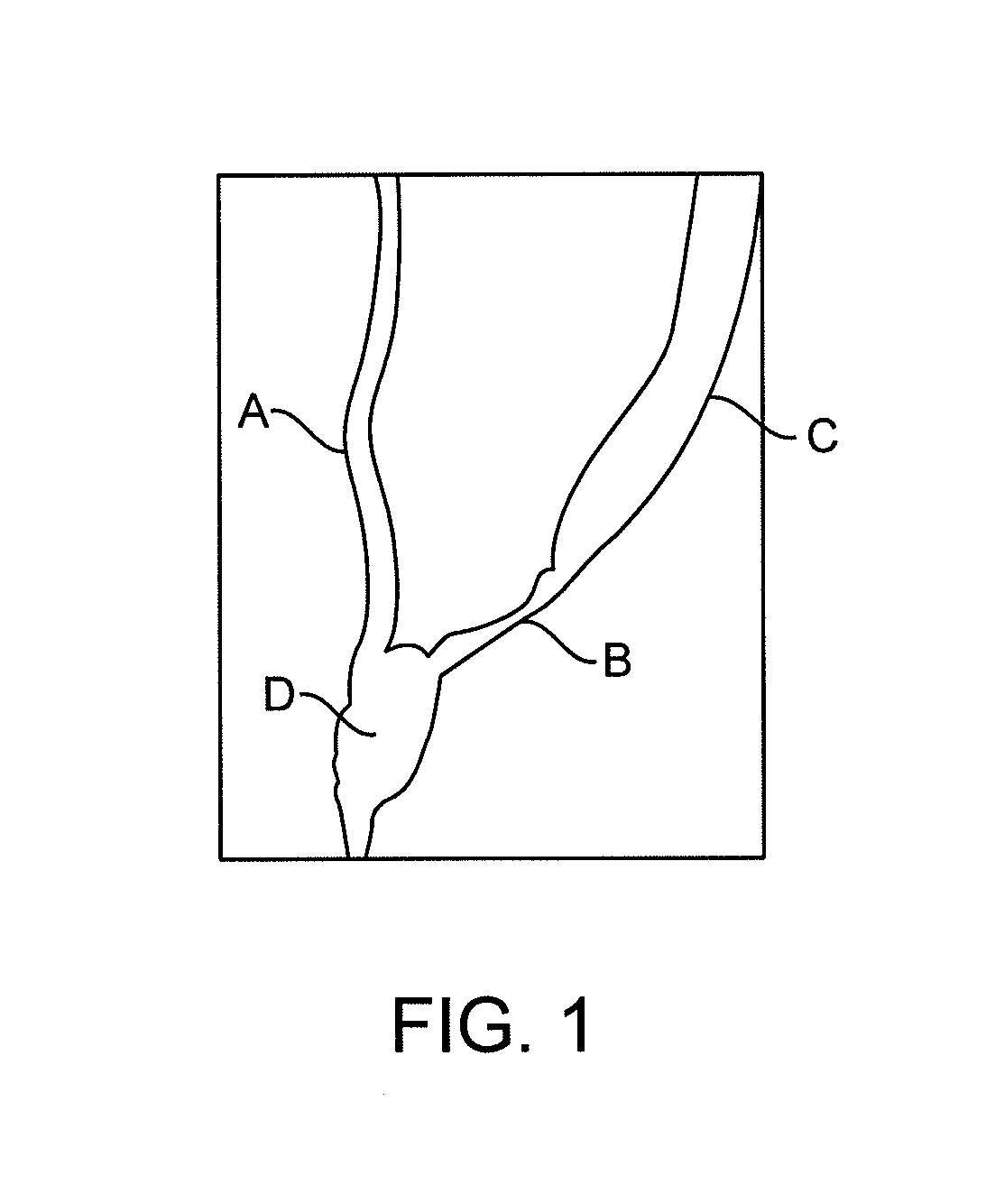Stent to assist in arteriovenous fistula formation
a technology of arteriovenous fistula and stent, which is applied in the direction of prosthesis, catheter, blood vessel, etc., can solve the problems of limiting the flow rate, many of the avf created do not mature to a usable avf, and the creation of an arteriovenous fistula, etc., to achieve the effect of reducing the turbulent blood flow
- Summary
- Abstract
- Description
- Claims
- Application Information
AI Technical Summary
Benefits of technology
Problems solved by technology
Method used
Image
Examples
Embodiment Construction
[0038]A stent used in creation of an arteriovenous fistula is now described. While the stent may be used in the creation of a fistula at any location in the body desired by the physician, the ensuing descriptions shall generally refer to a creation of a radiocephalic fistula. A radiocephalic fistula is a fistula created by an anastomosis between the cephalic vein and radial artery of the forearm. As such, any specific reference to a radiocephalic fistula should not be read to limit the scope of the invention.
[0039]Anatomical studies show that all the arteries in the body are branching from the main artery through an obtuse angle to allow a laminar, physiologic blood flow. Also the shape of the arterial bifurcations—a tilted conic trunk—allows for a smooth connection and a laminar blood flow that is beneficial to the arterial function. The shape and “gentle angles” of bifurcations of the arteries in the body are a testimony that this is the most efficient way to ensure a good functio...
PUM
| Property | Measurement | Unit |
|---|---|---|
| anastomosis angle | aaaaa | aaaaa |
| anastomosis angle | aaaaa | aaaaa |
| anastomosis angle | aaaaa | aaaaa |
Abstract
Description
Claims
Application Information
 Login to View More
Login to View More - R&D
- Intellectual Property
- Life Sciences
- Materials
- Tech Scout
- Unparalleled Data Quality
- Higher Quality Content
- 60% Fewer Hallucinations
Browse by: Latest US Patents, China's latest patents, Technical Efficacy Thesaurus, Application Domain, Technology Topic, Popular Technical Reports.
© 2025 PatSnap. All rights reserved.Legal|Privacy policy|Modern Slavery Act Transparency Statement|Sitemap|About US| Contact US: help@patsnap.com



